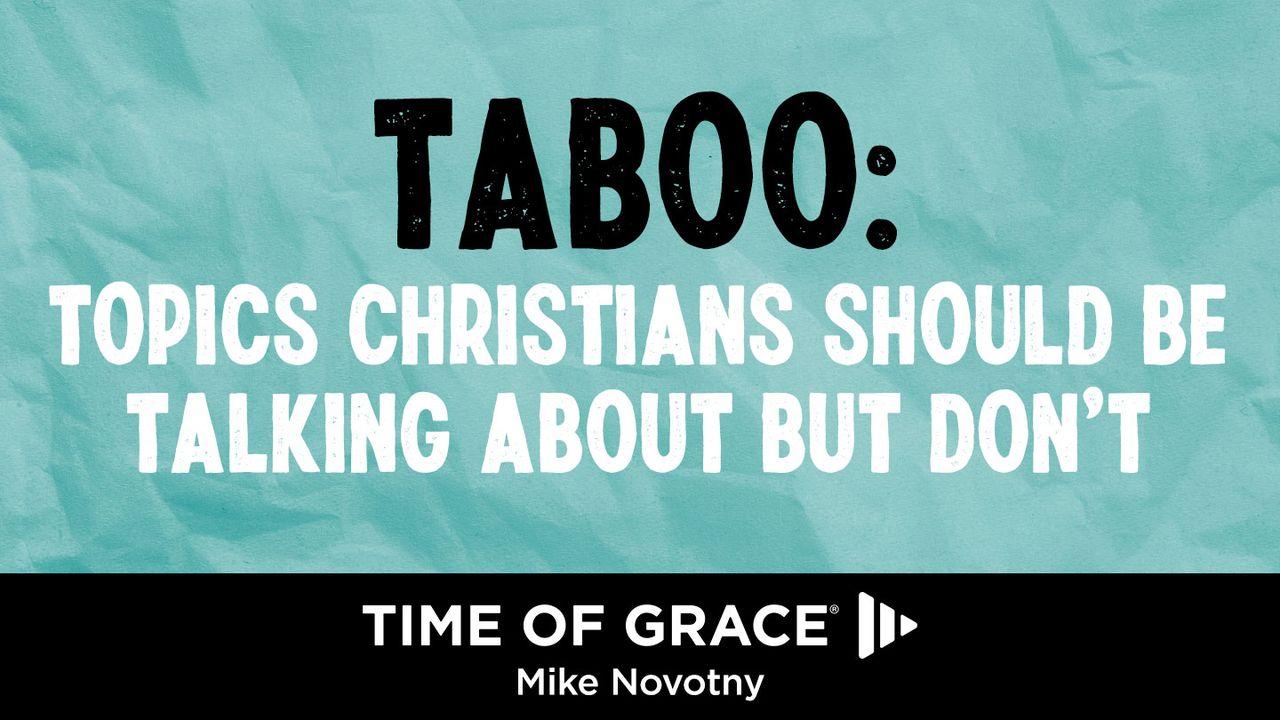Taboo: Topics Christians Should Be Talking About but Don’tနမူနာ

The End of Racism Starts With Jesus
I once searched my office and noted how various artists chose to depict our Jesus. My collection included some action figures of Jesus, a painting of Jesus, an icon of Jesus, and some ceramic Jesuses. What shade of skin did they believe was bundled up in Bethlehem? What color hands blessed the kids and calmed the storms? How much melanin was in the man who died and was raised to life for our salvation?
Pondering such questions, I opened to page one of the New Testament to the genealogy of Jesus, that seemingly skippable list of names that contains a powerful antidote to discrimination (Matthew 1:1-17).
Abraham was from Ur, modern Iraq, but God called him to become an immigrant and move to Canaan, that is, modern Israel. His son Isaac was born in Israel and later married Rebekah, who was from Syria. After some family drama with Jacob’s sons, Jesus’ ancestors immigrated to Egypt for 450 years before returning to Israel where good ol’ Boaz met a Moabite woman named Ruth, who lived in modern Jordan. So, Jesus’ story starts with Iraqi, Israeli, Egyptian, and Jordanian people.
Matthew 1:6-11 lists the kings in southern Israel who lived from about 1000 to 600 B.C. Their wives are listed in other parts of the Bible; one is from Tyre—modern Lebanon. King Solomon was famous for marrying foreign women and had many mixed-race children who filled the palace and the land of Israel. In 722 B.C., the Assyrians forced the Jewish people into exile and replaced them with their people, who were from Iran, Iraq, Turkey, and Syria. These cultures mixed and formed the Samaritan culture. Next, in 586 B.C., the Babylonians forced the remaining Jews into another exile back to Abraham’s land, where they spent seventy years surrounded by their Iraqi neighbors.
We don’t know much about the names that cover the time between the Old and New Testaments, but we do know the history. After the Babylonians came the Persians from Iran. Then the Greeks from Greece, and then the Egyptian Ptolemies fought the Syrian Seleucids until the Jewish Hasmoneans fought back. Finally, the Italian Romans showed up and a little baby was born in Bethlehem—Jesus, the Messiah.
Put all those people, places, countries, and cultures together, and what do you have? You have a multiracial Messiah. Jesus’ people are Iraqi, Iranian, Syrian, Jordanian, Egyptian, Turkish, Lebanese, and mostly immigrants. What’s more—this list was written by a Jewish man in the Greek language!
Here’s how I would summarize the DNA in our Savior’s genealogy—Jesus isn’t just like you or me or him or her. Jesus is like us. Think of it this way—JesUS. You can’t even spell our Savior’s name without mentioning “us.”
Meditate on the meaning of the New Testament’s very first page, and you might find one of God’s best reasons to live together in unity and peace.
Want to read more on these taboo topics as well as other tough questions? Check out the book Taboo: Topics Christians Should Be Talking About but Don't by Mike Novotny.
ကျမ်းစာများ
ဤအစီအစဉ်အကြောင်း

Hot-button issues dominating our culture can make speaking out feel taboo. Hiding from hard conversations won’t work. We need to know what God actually says about these issues, and by looking to Scripture, we can find the answers.
More
စပ်ဆိုင်သော အစီအစဉ်များ

ဝိညာဥ်ကြီးထွားခြင်းကို တည်ဆောက်ပေးသော အလေ့အကျင့် (၇)ခု

ယေရှု၏ ဘုရားဇာတိတော်ကို အတည်ပြုသောအကြောင်း (၅) ရပ်

ဆာလံကျမ်း ၁၁၉ အရ၊ နှုတ်ကပတ်တော်တရား

BibleProject | ယေရှုနှင့် လူသားမျိုးနွယ်သစ်

BibleProject | ဘုရားသခင်၏ထာဝရမေတ္တာ

ဖတ်သောအရာကို နားလည်ပါသလား

BibleProject | ကားစင်တင်ခြင်းခံဘုရင်

BibleProject | ပဋိညာဉ်သစ်၊ ပညာသစ်

BibleProject | တမန်တော်ပေါလုအကြောင်းလေ့လာချက်
